Chapter 2 Rise Of Regional Powers Background
With the death of Mughal Emperor Aurangzeb in 1707 the empire lost its strength and as a result, regional powers became powerful. Provincial rulers or ‘Subedars tried to rule independently in their respective areas.
On the ruins of the Vast Mughal Empire, many regional kingdoms appeared. Such as Hyderabad, Oudh, Mysore, Maharastra, Carnatic, Bengal etc. All these new kingdoms and its kings emerged in the 1st half of the 18th century.
Some of the regional kings declared independence’ against the Mughals. The rulers of the new kingdoms made the expansion of trade and commerce relations with the native states necessary.
Bengal:
During the rule of Aurangzeb (1658-1707), Ibrahim Khan the Subedar of Bengal brought companies given permission to continue duty-free trade in Bengal on an amount of Rs. 1200 per year.
Murshid Quli Khan (1713-1727), the first Nawab of Bengal disapproved of the firman or data. Rich merchant Jagat Seth joined hands with him and at the same time he opposed the use of Murshidabad mint by the Company.
The dastak was a royal permit for duty-free trade in Bengal, which was first given by Farrukshiyer in 1717. Sujauddin (1727-1739) and Alivardi Khan (1740-1756) controlled the misuse of dastak.
Wbbse Class 8 History Chapter 2 Notes
Murshid Quli Khan
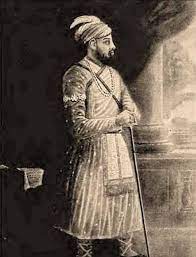
Job Charnak bought the Zamindari right (1698) of Sutanuti, Gobindapur and Kolkata villages from Sabarna Choudhuri. Murshid Quli Khan asked the Zamindars to sell their land to the company. The British also built Fort St. George of Madras (Chennai).
In 1700 Bengal, Bombay and Madras became the presidencies. In 1696 permission was got and in 1700 on the name of William-III Fort William of Calcutta was built under the presidency of Sir Charles Eyer.
The French Company was losing its trade centres from 1700-1720 A. D. But after 1720 A. D. the company revived and reorganised again. The French merchants captured Maricions (1721) Mahe (1725) and Karikol (1739).
Class 8 History Wbbse
The French officials did not have any political ambition except the expansion of trade. But Joshep Dupleix took initiative to extend the empire in India from the year 1742 A. D. As a result Anglo-French rivalry started.
The Danes merchants established trade centres in Tranquebar (1620) and Serampore in 1755 A. D. Other Europeans like ‘The Ostend Company’, ‘The Swedish Company’, ‘Austrian East India Company etc. were built but were in vain to establish its supremacy in India.
Jagat Seth: The three main merchants of Murshidabad were Umichand, Khoawaja Wazid and Jagat Seth. Among these Jagat Seth with the help of Mirzafar made a conspiracy against Siraj-ud-daullah.
Jagat Seth was really the nephew of Manik Chand, the diwan of Dhaka and the elder son of Heeranand Sahu whose original homeland was in Nagore of Marwar but with the blessings of a Jain Saint, he migrated to Patna, Bihar.
“Jagat-Seth” was the title of Fateh Chand given by a Mughal Emperor. As a banker and rich merchant Fateh Chand got this honourable title. He belongs to a Jain Marwari business family.
Jagat Seth
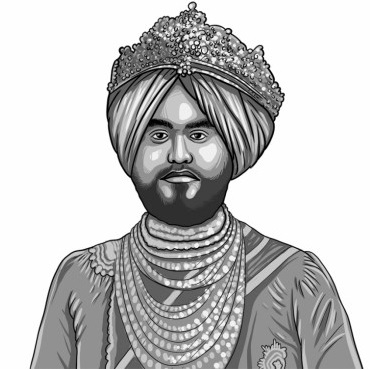
His spiritual guru was Jain Acharya Sri Bhratruchandra to Suri. According to the official historian of East India company Robert Orme “Jagat Seth as the greatest shroff (money changer) and banker in the known world”.
Nick Robins called him the “banker of the world”.
Hyderabad:
The independent Hyderabad was founded by Nizam-Ul-Mulk in 1724 A. D. But in 1720-22 A. D. he defeated Mughal enemies in Deccan. He was also a Wazir in the Mughal court. Ultimately he left the royal court and built a separate Hyderabad state.
Nizam-Ul-Mulk
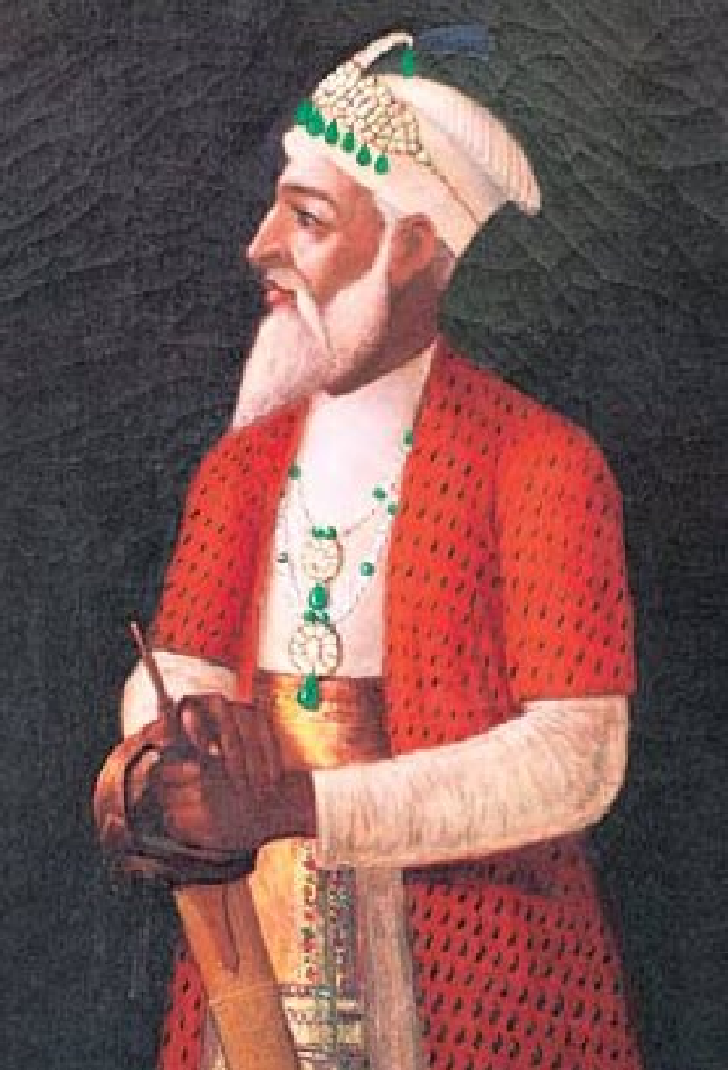
Nizam died in 1748 A. D. Ruler of the Carnatik isolated himself from the control of Nizam. When the Civil war started in 1740 A. D. on the question of capturing the throne of it, Europeans entered into the court politics of Carnatic.
Oudh :
Sadat Khan Burhn Mulk founded the independent Oudh in 1722 A. D. He was a brave, bold and wise man. For the maintenance of peace and law and order he built a fort and reorganised the army. He drove away the evil zamindars from Oudh.
Sadat Khan
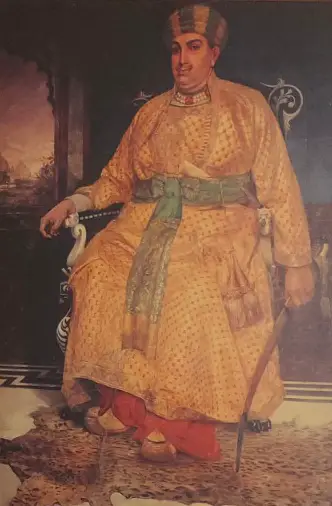
He kept a peaceful climate in Oudh. His successor Sadat Khan and nephew SafdarZang independently ruled over Oudh. But in the time of nawab Suja-ud-daullah he was involved in the battle of Buxer (1764 A. D.) and had to pay huge war compensation to the British.
Maratha Power and the Portuguese:
The Portuguese mariners were more powerful in India from the 15th century, from the coming of Vasco-da-Gama (1498 A. D.). Mughal emperor Shah Jahan had driven them out from their trade centre of Hooghly in 1632 A. D.
Class 8 History Wbbse
In 1709 A. D. Salsett and Bassien the important seaports of the Portuguese came under the control of the Marathas. The Portuguese got right only on Goa, Daman and Diu.

Their domination over these regions ended in 1961 A. D. and the 400 years of their rule in India was thus terminated. The British and Dutch merchants jointly had driven out the Portuguese.
Historians say that though the earliest intruder in the east, Portugal could not establish any permanent domination in India.
Attack of Bargits in Bengal:
Shivaji founded the permanent army named the ‘Bargirs’. The Badgers attacked Bengal under the leadership of Bhaskar Pandit during the rule of Nawab Alivardi Khan. The Badgers attacked and plundered Bengal and Orissa in between 1742 to 1751.
Bhaskar Pandit
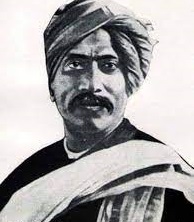
To save the family, the merchants of Calcutta dug the “Maratha ditch” on 3rd Feb. 1744.
The Dutch and the local Kings:
The ruler of the Netherlands self Gen Peterson Coan came to India for their expansion of trade and commerce. After capturing Jakarta and Batavia he blocked Goa (1639) and occupied Ceylone (1658) from the Portuguese.
Class 8 History Wbbse
The Dutch merchants made trade centres in Gujarat Coromandel Coast, Bengal, Bihar and Orissa. Some other important centres were Surat (1616), Chunchura (1653), Patna, Kashimbazar and Nagapattam (1659) and Cochin (1663).
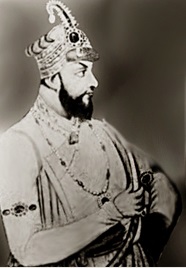
Ultimately Dutch and the British conflicted among themselves. During the ‘battle of Bidera’ (1759) between Mirzafar, the Nawab of Bengal and English official Robert Clive, the Dutch merchants supported the Nawab of Bengal.
Class 8 History Wbbse
From the Cambridge History of India (Vol-V Page 57), we know that due to the economic crisis, the Dutch Company became weakened and once, they were compelled to give up India. The British Company captured their centre.
Farruksiyar’s Firman (1717):
The event that crowned the trading history of England in India was the grant to them of a firman or “dastak” in 1717 by the reigning Mughal emperor, Farruksiyar. This firman granted them the right of trade everywhere in India.
Later most British activities in India centred on Bombay, Madras and Calcutta. Historian William Orme called this firman or trade license or dastak as a “magna-carta” in the history of British trade and commerce.
Farruksiyar
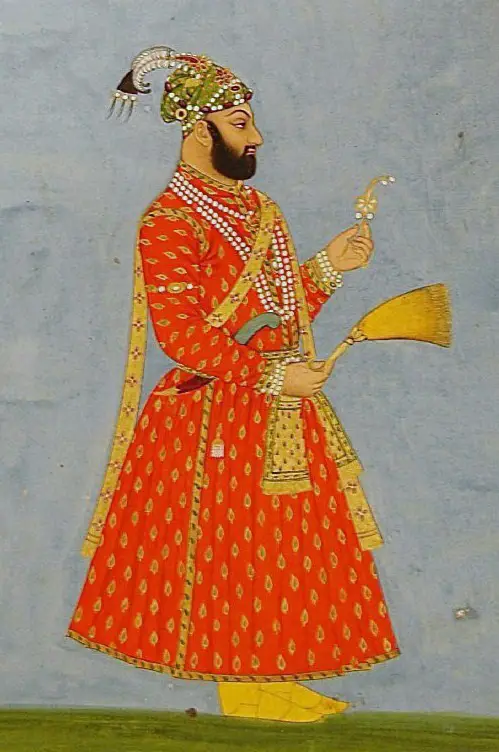
Sir John Surman sent William Hamilton to the court of Mughal Emperor Farrukhsiyar. With the help of Hamilton, the emperor was cured of a disease. Farrukhsiyar was satisfied and John Surman was able to get 3 firmans from the emperor in July 1717.
According to firman (1717)
- The company got the right to duty-free trade in place of an annual payment of Rs. 3000 was fixed,
- The company was also allowed to settle wherever they liked, and to rent additional territories around Calcutta,
- The English company was also given the power to duty-free trade, but the rent was paid for Madras and in Gujarat provinces Rs. 10,000 was taken early in the satisfaction customs due at Surat,
- The rupees coined by the company at. Bombay were made currency all over the Mughal Empire,
- The company could buy 38 villages adjoining areas of Sutanuti, Govindapur and Calcutta,
- The company also should have the right to make coins and issue money from the mint of Murshidabad.
Wbbse Class 8th History Notes
Thus Farukhsiyar’s firman caused the prosperity of the English East India Company. Historian C. R. Wilson remarked it “a diplomatic success of the East India Company”.
Chapter 2 Rise Of Regional Powers Causes And Effects Of The Conflict Between Nawab Siraj Ud Daulah And The East India Company
The 16 years reign of Nawab Alivardi Khan, grandfather of Siraj-ud- daulah gave prosperity to the History of Bengal, but also created many problems for the future successors.
After the death of Alivardi in the month of April in 1756 A.D. his favourite grandson Siraj sat on the throne of Bengal at the age of only twenty-one and reigned for 15 months.
Siraj-ud- daulah
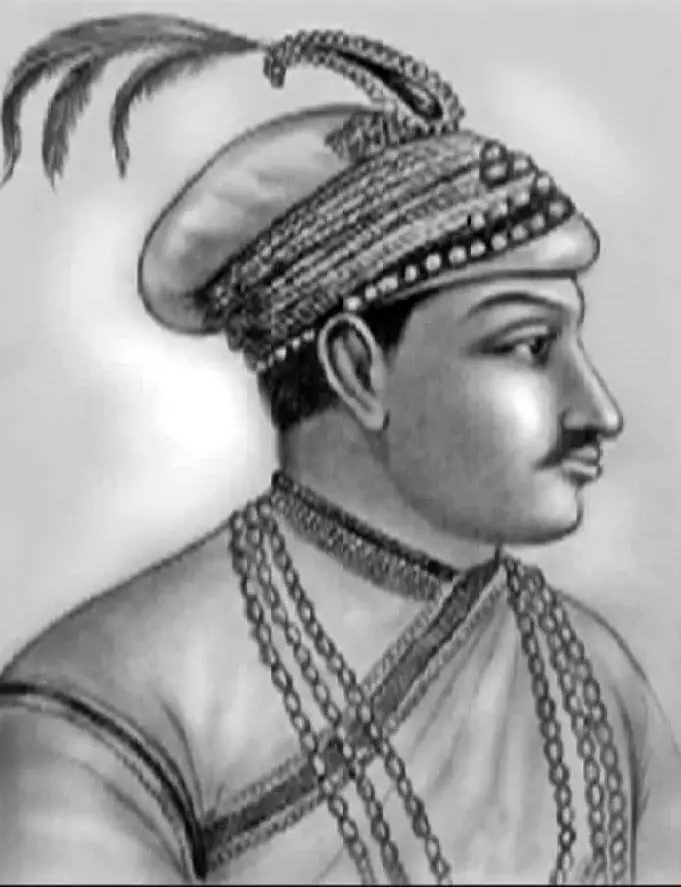
1. When the British and the French utilised:
The political weaknesses of the Deccan and started constructing forts for their own security, but nobody intervened. So, when they did so in Bengal without the permission of the Nawab, Siraj ordered them to stop the construction immediately.
The French stopped their work by this order, while the British continued. Ultimately Siraj had to employ force against this British arrogance and the mutual relationship worsened.
2. Misuse of Dastak:
In 1717 A.D. the Mughal emperor Farrukshiyar gave a free trade licence or Firman or Dastak to the East India Company in exchange of an annual sum of Rs. 3000.
Later the officers of the company misused this dastak and began to earn private profit by trading freely. Historian P. J. Marshall has described it wonderfully in his ‘East India Fortunes’.
The earlier nawabs had never considered the economic losses of their treasury in terms of this misuse of dastaks. Siraj ordered to stop it and made him an enemy of the British.
Wbbse Class 8 History Chapter 2 Notes
3. Shelter to the Hindu Subjects:
Many Hindus were dissatisfied with the rule of the Muslims. The British used to incite the Hindus against the new Nawab Siraj and also gave shelter. to the conspiratorial Hindus.
For instance, when the British gave shelter to Krishnadas, son of Rai Durlav in their Kuthi at Falta, Siraj asked them to hand over the treacherous person to him. When Siraj’s proposal was refused, he became very angry with the British.
Wbbse Class 8th History Notes
4. Attack on Calcutta and the Black Hole Tragedy:
Being disturbed by the British, Siraj attacked the Fort of Calcutta on 20th June 1756 A. D. Then, he kept 146 English people imprisoned within a small room 12″ x 14″. Out of them, 123 persons died from a loss of breath.
According to the British historian Holwell, Siraj killed those persons in a planned way. This incident is known as the “Black Hole Tragedy”.
But Annie Besant said that the measurement of the room as noted by Holwell was not true according to the rules of arithmetic and geometry. Because 146 persons could not be kept within such a small room.
Dr Jadunath Sarkar said that Calcutta at that time was not inhabited by 146 English people. There was a number of 60/65 persons. Historian Dodwell had made Siraj responsible for that.
However, on hearing about the attack of Calcutta by Siraj, Robert Clive and Admiral Watson came from Madras to Calcutta and reoccupied the city on 2nd January 1757 A. D.
Ultimately Siraj had to accept the insulting Treaty of Alinagar on 9th February 1757 A. D. By this treaty, Siraj had to accept the misuse of dastaks and allow the construction of forts.
5. The British attack on Chandannagar:
Clive feared that Siraj would make friends with the French, and occupied Chandannagar, the only commercial centre of the French in Bengal in March 1757 A. D. This attitude also disturbed Siraj.
6. Conspiracy against Siraj :
Clive made a plan of conspiracy to overthrow Siraj. He tried to conspire against Siraj in the capital of Hazarduari and tried to bring the intimates of Siraj to his side, with many possible gains.
Mirzafar, the ‘sister-in-law of Siraj was given the chance of getting the Masnad of Bengal. Rai Durlav was about to get a bribe of 30 lakhs of rupees. The most wealthy merchant Jagat Seth was also offered to get many commercial opportunities.
The faithful servant Umi Chand was also purchased by the British. Dr Rajat Ray in his book ‘Palashir Sharajantra’ has shown that Jagat Seth was the main conspirator. However, the entire situation created an atmosphere, suitable for war.
Chapter 2 Rise Of Regional Powers Battle Of Plassey 1757 A. D
Battle Of Plassey
On 23rd June, Thursday, 1757 A.D. Nawab Siraj-ud-Daulah, who was already very angry with the British proceeded with 50,000 soldiers against the British. Mirmadan and Mohanlal fought valiantly.
Clive occupied Hazarduari very easily and imprisoned Siraj-ud-Daulah and his wife-Lutfa-un-nisa. Miran the son of Mirzafar, beheaded and killed Siraj in front of his wife. The battle of Plassey was really Plassey plunder.
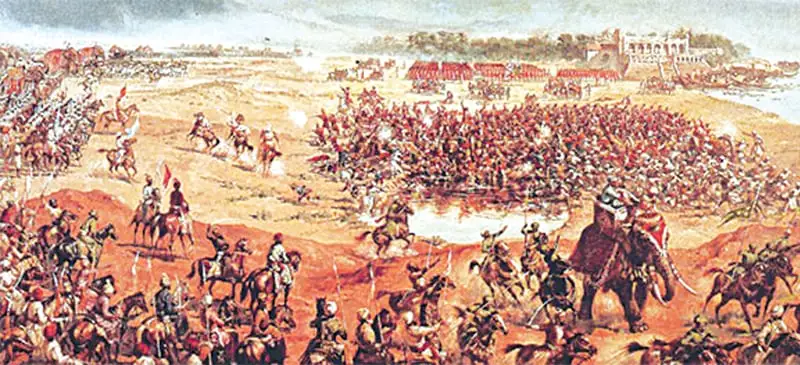
Dr. Percival Spear said. that the “economic bleeding of India” through the drainage of wealth started from this battle. According to one statistic, an amount of Rs. 1,73,96,761 went from Bengal to England just after the battle of Plassey.
The New nawab became bankrupt. Besides money, the British won the land of 24 Parganas. In the words of Rabindranath Tagore, “Baniker mandanda pohale surbari dekha dilo rajdanda rupe”. Many scholars called it ‘Plassey Plunder’.
Jadunath Sarkar said that Plassey helped the first renaissance of Bengal because Western education came through this battle. So it is one type of blessing to the Indians.
Importance of the Battle of Plassey:
According to the British historian S. C. Hill, Siraj involved himself in to the battle out on his own arrogance and lust for money. P. E. Roberts also thinks that Siraj was responsible for the battle of Plassey.
Wbbse Class 8th History Notes
But Dr Brijen Gupta did not accept it. Whatever might have been the initial arrangements that this battle was a farce and a game with cannons is a settled fact.
According to Malleson “Plassey, though decisive can never be considered as a great battle.”
- Ultimately, the East India Company established its supremacy upon India for the next hundred years.
- According to the earlier secret treaty, Mirzafar took the place of Siraj on the Masnad of Bengal. But though he became the Nawab, the entire power was enjoyed by the Company. Percival Spear had referred to this ‘Power behind the throne’ and stated that the real relationship that existed between the Nawab and the Company was that between shadow and substance.
- As a reward of victory, the officers of the company received huge money.. Clive alone received 3 lakhs of Rupees as a reward and this money was given from the treasury of Bengal.
Nawab Mirzafar (1757-1760):
By the victory of Plassey (1757 A.D.) English East India Company established its political and economical control over Bengal. After the fall of Siraj, Mirzafar sat on the throne of Bengal but he had no sovereignty of his own.

He became a puppet in the hands of the British. His only duty was to satisfy the endless demand of the British. In course of time when the economic pressure on Mirzafar was increased, he became irritated and made a secret alliance with the Dutch merchants.
Knowing it, the British general Robert Clive defeated Mirzafar in the battle of Bederah (25/ 10/ 1759) and dethroned him. Instead of treacherous Mirzafar, his son-in-law Mir Kasim was put upon the maenad of Bengal.
Chapter 2 Rise Of Regional Powers Nawab Mir Kasim 1760 To 1763
In 1760 A.D. Mir Kasim became the Nawab of Bengal. Initially, he was satisfying the economic demands of the British at the utmost level. As a result, he had a better relationship with the British in the beginning.
Vansitart, who became the next general after Clive was sympathetic to him. But always eager to build an independent administrative structure, as he was always afraid of the growing strength of the British, he never tried to be a puppet like Mirzafar.
Wbbse Class 8th History Notes
So, as a defence against the officers of the company, he adopted a few independent measures. Mir Kasim tried to end the political misrule and adopted a new system to expose himself as an independent and brave ruler before all.
Verelest regarded those measures as programmes for warfare against the British. Depending upon his words, Dodwell said that Mir Kasim was responsible for his struggle with the British.
But historian P. J. Marshall thinks that the Nawab was not preparing himself to fight against the British, but he never looked well at the increasing power of the English East India Company. Perhaps, his mentality made Nawab’s struggle with the company an inevitable fact.
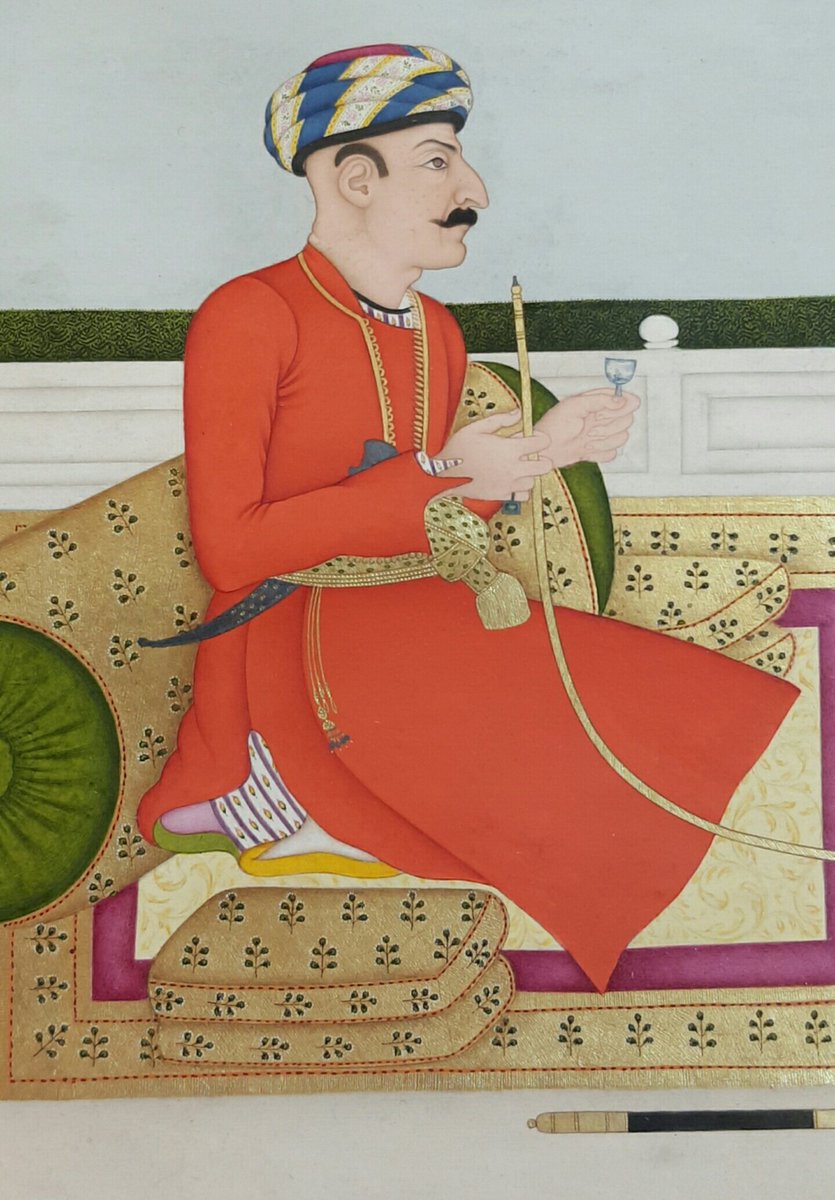
The Independent measure of Mir Kasim :
- To stop the corruption of the revenue officers, Mir Kasim sacked some government officials like Chunilal, Manilal etc and seized their properties. Thus the empty treasury was filled up to some extent. He also donated a huge amount of money to the company by taking a loan from the business tycoon Jagat Seth. Besides this, Nawab retrenched Ramnarayan of Pabna for not paying back the due money.
- Mir Kasim released the right over Burdwan, Midnapur and Chittagong for Rs. 53 lacs per year by a secret agreement with the company. This was done for the settlement regarding revenues with the company. Thus the Nawab increased his imperial ideology.
- To strengthen its military power, Mir Kasim purchased many cannons and guns. He made intimacy with France to train his army in the French way. He appointed Markar and Samru the famous two French Generals, in his army. Verelesrt described his military reform as Mir Kasim’s thought of freedom. But Vancitart said that Mir Kasim trained his army in a western way just to conquer Nepal.
- Mir Kasim shifted the capital of Bengal from Murshidabad to Munghyr of Bihar for formulating ruling policies independently. The reason of such shifting was that the British may interfere off and on because Murshidabad was situated very near to Calcutta. He also built a fort in Munghyr for safety.
- Mir Kasim took the policy of curtailing costs. He introduced some new taxes for the smooth flow of revenue earning. He retrenched many government officials and zamindars who were prone to revolt.
- Mir Kasim took the initiative to stop corruption in the field of trade duties. He calculated that the personal business of some government employees by using Dustak or official seal were tax-free and thus taxes were evaded indirectly.
As a result, Nawab was incurring a loss of Rs. 25 lacs per year. To stop this illegal business by using ‘seal’ he entered into an agreement with Vansitart.
It was decided that native traders will pay 25% tax, employees of a company will pay 9% tax and in the salt business tax will be 22% and all of them are explainable to Nawab for respective activities. This is known as the ‘Treaty of Munghyr’.
The English employees and the clerks admitted all the clauses except the salt tax. By this Mir, Kasim became very angry and he lifted all the taxes from native merchants and put them in the same category with the European merchants.
Wbbse Class 8th History Notes
With this attitude of the Nawab, the company close the way of battle with him. But according to Dodwell, the tax policy was an excuse only. The main reason was the interesting clash of the Company and the Nawab.
Dr Nandalal Chatterjee in his book ‘Mirkasim’ said that Nawab wanted to get rid of the Company in every respect and for this battle became inevitable.
Battle of Katwa-Giria-Udaynala (1766 A.D.):
Nawab was repeatedly defeated by Kuthiyal Ellis in the battles of Katwa, Gira, Udaynala Munghyr, Murshidabad and Suti and ultimately took shelter in Patna.
After that he came to Oudh taking this scope, old Mirzafar was made the king of Bengal in July 1763 A.D. He became engrossed in the post of Nawab by paying Rs. 30 lacs to the Company and accepted all the terms and conditions of the Company.
The throne of Bengal was much desired to him rather than get lost from the scenario.
Wbbse Class 8 History Chapter 2 Notes
Battle of Buxar (1764 A.D.):
Defeated Mir Kasim now joined with Wazir Suja-ud-daulla, Nawab of Oudh, Ayodhya and Mughal emperor Shah Alam II and organised a huge contingent of army. Then he faced Hector Munroe, the efficient General of Clive in the field of Buxar.
The Buxar battle was fought with Marker and Samru, the French generals of Mir Kasim on 22nd October 1764 A.D. Mir Kasim was again defeated and took shelter in the forest. After that, he was assassinated near Delhi in 1777 A.D.
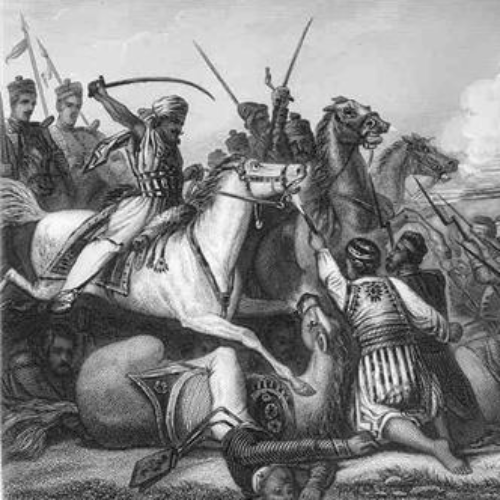
His two companions Shah Alam and Suja-ud-daulla surrendered to the British. Due to the defeat of Mir Kasim in the Buxar war, the last independent Nawab of Bengal was abolished.
This battle brought a unique change in history for expanding the empire by the British. In 1765 A.D. two Allahabad treaties in were signed with Clive. According to the first treaty, Oudh was returned to Suja-ud-daulla.
Wbbse Class 8th History Notes
But the British got Rs. 50 lacs as compensation apart from getting Kara and Allahabad districts. According to the second treaty, Shah Alam gave Clive the right of collecting revenues from Bengal, Bihar and Orissa in exchange of Rs. 26 lacs per year.
Due to the Buxar battle, the economic, political and administrative powers of the Company were increased a lot. Historian Vincent Arthur Smith said, “Plassey was a cannonade but Buxar was a decisive battle.
” Sir James Stephenson has rightly said, “the battle of Buxar serves far more credit than the battle of Plassey as the origin of the British power in India.”
Chapter 2 Rise Of Regional Powers Significance Of The Diwani Right
Lord Clive, received the Diwani of Bengal, Bihar and Orissa from the Mughal emperor Shah Alam II in 1765 A.D.
- This event happened after the battle of Buxar (1764 A.D.) and during the restoration of Nawab Mirzafar (1763-65 A.D.) But in 1765 A.D. After the death of Mirzafar, his minor son Nizam-ud-Daulah sat on the throne.
- It was decided by a treaty between this Nawab and the Company that the Company will give an annual amount of 53 lakhs of Rupees for the expenses of his administration. An amount of 26 lakhs of Rupees will also be given from the revenue of Bengal, Bihar and Orissa of the Mughal emperor Shah Alam II.
- The rest would be regarded as the income of the Company. After the acquisition of Diwani, the company understood that the British could get its highest profit from land revenue.
- So the main aim of the company’s rule was to establish its total control over large areas of India.
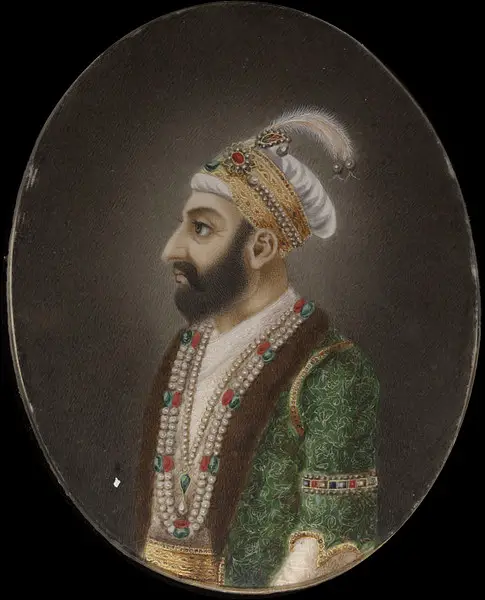
Significance of the Double Government :
Robert Clive introduced a Diarchy in Bengal in 1765 A.D.
- By a treaty, the Nawab of Bengal surrendered the administrative and military power to the company, on 20th February 1765 A.D.
- According to Dr Nandalal Chatterjee the Nawab thus became a puppet to the hands of the Company, which became actually powerful.
- There were two features of this diarchy- The Company was all-powerful but the Nawab was only a formal ruler. The Company had control over finance and the army, while Nawab had to supervise administration. As two systems were maintained in a single structure it was known as a double government.
- After by its introduction, the Company received the Diwani of Bengal, Bihar and Orissa in 1765 A.D. In 1764-65 A.D. 1 crore 13 lakhs of rupees were earned as land revenue. The amount increased to 2 crores 20 lakhs of rupees by 1765-66 A.D.
- Besides, the monopoly of the Company brought disaster to indigenous trade merchants and handicrafts. P. J. Marshall has said in “East India Fortunes” that the drain of wealth from Bengal and India was increased from the diarchy.
- Percival Spear mentioned about the Power-behind the throne. The politics between the Nawab and the Company was led by responsibility without power and power without responsibility. Thus the Nawab became a shadow of the body of the Company.
- The Company did not play any responsible role at this time. As a result, nearly 3rd of the people of Bengal died during the famine of 1176 B.S. (1770 A.D.) Lord Cartier, the then governor of Bengal had done nothing for the famine-stricken people.
- Clive himself acknowledged the corruption and misrule and exploitation of the diarchy in Bengal. John Key said, “The dual administration made confusion more confounded and corruption more corrupt.” In 1772 A.D. Warren Hastings came as the Government and brought an end to the dual rule.
Chapter 2 Rise Of Regional Powers A Policy Of Lord Wellesley To Expand The Empire In India
Wellesley extended the British territory only within his 7 years of rule in India (1798-1805 A.D.). He realised that the situation was grave but not that fearsome.
Wbbse Class 8th History Notes
So he devoted himself in expanding the empire in spite of the political uncertainty and disorder. Historian Percival Spear commented that the change he had brought within the span of 7 years was unique in the history of the expansion of the empire.
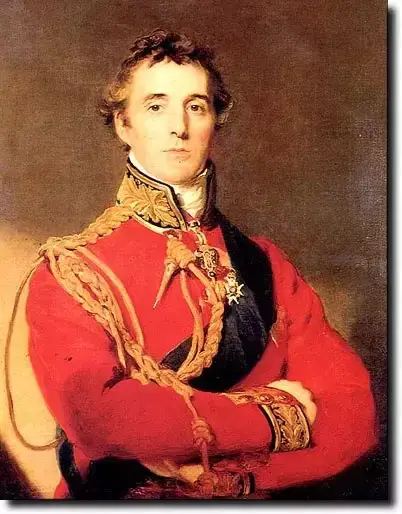
The objective of expanding the empire :
- The ‘french phobia’ was still there even though the Wandiwash of Carnatic (1760 A.D.) diminished the possibility of establishing French dominance in India.
- There still existed a huge army contingent under the French Commander Reymond in Hyderabad. Similarly. another commander, Peron of Sindhia became active.
- Tipu Sultan brought some cannons from France. Over and above, some French commanders joined his army.
- Wellesley felt the urge of expanding the British empire in India due to French phobia.
- It became the prime motive of Wellesley to disintegrate the Maratha and Nizam as well as the power of Tipu under the shelter of the French, for the purpose of expanding the British Empire.
Wbbse Class 8th History Notes
The main three policies of Wellesley were:
- To conquer by the encounter.
- To conquer diplomatically and
- To conquer by the subsidiary alliance.
To Conquer by War:
Tipu disobeyed this policy of Wellesley first. As a result, Wellesley defeated and killed Tipu in the 4th Anglo-Mysore War in 1799 A.D. Wellesley alleged Tipu for his alliance with the French and declared war against him.
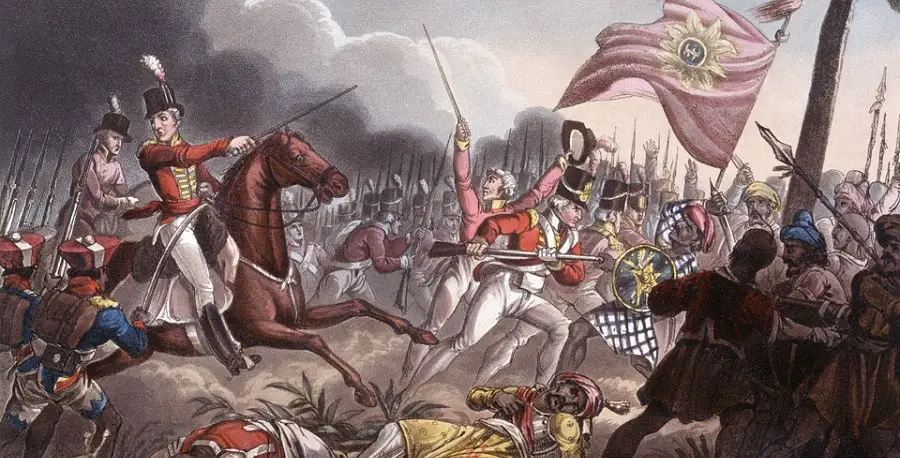
Bhonsle and Scindhia were also defeated by Wellesley in the 2nd Anglo-Mysore war in 1803-1805 A.D. Afterwards they signed the Treaties of Deogaon and Surjiarjungaon to accept a subsidiary alliance.
As a result, the British empire was established in those states.
To Conquer Diplomatically:
Wellesley was also successful in expanding the empire diplomatically. With this process, he conquered Tanjore, Surat, and Carnatic, In 1801 A.D. taking advantage of the internal conflict for the inheritance he established dominance upon Surat keeping in mind, the military importance of the ‘Surat Fort between Deccan and Gujarat.
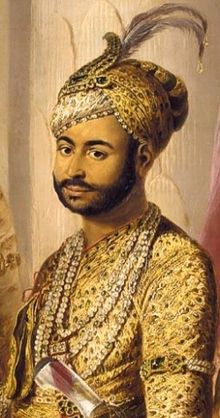
He captured Carnatic after the death of Nawab Umdad-Ul-Umarah ignoring the legitimate claim of the eldest son of the Nawab.
To conquer by Subsidiary Alliance:
Much before Lord Wellesley, Clive had first thought about this Subsidiary Alliance as early as 1765 A.D. In India, during the rule of Wellesley (1798- 1805 A.D.) one of the essential features of his domination was the Principle of Subsidiary Alliance.
This was an important event in the history of British imperialism in India. The changes which were introduced during his seven years’ time had facilitated colonisation in India.
“The changes brought about during the seven years of Wellesley’s leadership were so great that they are rightly considered to mark an epoch in the development of British power in India.- Percival Spear.
The main principle of Wellesley’s Subsidiary Alliance is that if any princely state had established a friendship with the British then the latter will bear the entire responsibility of that state’s security.
So the princely states had to submit their sovereignty and accept the friendship of the British in the name of a Subsidiary Alliance.
The main features of the Subsidiary Alliance were
- If any state accept it, it had to give either money or territory to the British for the maintenance of the army.
- Once a friend of the British the state had to seek for British permission to establish a treaty of friendship with any other state.
- The said state had to appoint only British and not a single European in its service.
- The state had to keep an English resident within its territory.
- If the state had a conflict with any other state, it had to act according to British decisions.
- The state had to declare that the English East India Company was a powerful Company.
- If all these conditions were fulfilled, the Company’s army would give security to the state’s internal communication and against all foreign invasions. In 1798 A.D. 1st September, the Nizam of Hyderabad first accepted this alliance.
The British spent the entire amount for the 7 battalion army of the British. In 1801 A.D. The Nawab of Oudh accepted it that gave Rohilkhand, Gorakhpur and the Ganga-Jamuna Doab to the British.
In 1802 A.D. the Peshwa Baji Rao II accepted the alliance by the Treaty of Bassein. When Tipu Sultan of Mysore refused to accept it, Wellesley fought against him in the fourth Anglo-Mysore war in 1799 A.D.
Philosopher Mill has commented about the worst limitation of this Subsidiary Alliance that all the princely states which had accepted it had to dissolve their army. Most of the soldiers were unemployed and joined the groups of Pindari robbers.
So the entire situation became far more complicated. Historian P. E. Roberts. said that the people of India did not respect Wellesley like Dalhousie.
Evaluation :
The British authority was grateful to Wellesley for his policies in respect of expanding the British kingdom, but the Indians could not respect him. He did not do anything constructive other than establishing the Fort William College in 1800 A.D.
Historian P. E. Roberts said that in comparison with Lord Clive, Wellesley did not get that respect. Because he only concentrated on the interest of expanding the British Empire.
Sidney Owen said, “British imperialism in India became the British Imperialism of India.” This was his greatest achievement.
Chapter 2 Rise Of Regional Powers Policy Of Lord Dalhousie To Expand The Empire In India
Lord Dalhousie was a keen Imperialist. During his reign (1848-56 A.D.) the British Empire reached its absolute form. Dalhousie was the ideal descendant of Robert Clive, Hastings and Wellesley who tried to expand the British empire in India wholeheartedly.
As a conservative imperialist, he used to say “The extinction of all native states of India is just a question of time.” The administrative structure of India was very undergraded.
So he called the Indians as “White man’s burden.” For this reason historian Percival Spear called him a “convinced Westerniser”.

A Policy of Dalhousie For The Expansion of the Empire:
Dalhousie adopted three policies for the expansion of the British empire in India-
- To Conquer by war.
- To conquer with a plea of misrule and
- To conquer by the doctrine of Lapse.
1. To conquer by war:
The states, which he conquered by war were Punjab, Sikkim, Burma etc. The background of the Second Anglo-Sikh War was laid when Dewan Mulraj, the ruler of Multan resigned (1848 A.D.) due to strained relations with Lahore.
At this time two English commanders Vance Agnew and Anderson were Lord Dalhousie killed in Lahore. Because of the Sikhs. did not like Lawrence, the British resident. Dalhousie, to subdue such arrogance of the Sikhs, declared war on 10th October 1848 A.D.
Anyway, Dalhousie defeated Jhindan the wife of Ranjit Singh and his minor son Dalip Singh in the battle of Chllianwala in 1849 A.D. and by sending them down to England, he captured Punjab.
In 1849 A.D. the king of Sikkim besieged Dr Campbell and Hooker. Then Dalhousie had to attack Sikkim and included 1670 sq. miles of Sikkim within the British territory.
The First Anglo-Burmese war was fought between Lord Amherst and Burma in 1824 A.D. before the Burmese policy of Dalhousie. At this time, the Burmese were defeated and signed the Treaty of Yandaboo in 1826 A.D.
The conditions of this treaty were violated by the Burmese and Tharwadi, the king of Burma started oppressing the English Merchants. With this, the British became very much dissatisfied.
Dalhousie demanded compensation from the king Mindon which Mindon refused to pay. As a result, the Second Anglo-Burmese war was fought (1853 A.D.).
The British dominance was established on Aracan, Tenaserim, Pegu, Pome, Rangoon, Martaban etc. when the king Badaupaya of Burma was defeated.
2. Plea of misrule:
By sacrificing all the moralities and legalities, Dalhousie captured Oudh in (1856 A.D.) with the excuse of bad administration. He arranged Rs. 12 lacs per year as a subsidy to Nawab Wazir Ali of Oudh.
After his death, Dalhousie ignored the right of the eldest son of Wazir Ali. Sleemann said that at that time there was bad administration, frustration and exploitation of the Taluqdars in Oudh.
According to H. H. Wilson The Oudh policy of Dalhousie was shameful.
3. Doctrine of Lapse:
The doctrine of Lapse was the notorious weapon of Dalhousie in expanding the British empire. The basic theory of this doctrine was that the state will be included in the British domain if the king of that state died childlessly.
And that king was prohibited in adopting any child. In the adoption system, Dalhousie divided the native states into three classes-
- Independent native state.
- The state originated by the Company and
- Tributary states under the Company.
Dalhousie prohibited adopting a son in the case of Company originated states and the tributary states. But he permitted the independent native states to adopt sons.
Under this Doctrine of Lapses Dalhousie captured the following states. Those were Satara (1848 A.D.), Sambalpur and Jaitpur (1849 A.D.), Bagat (1850 A.D.), Udaipur (1852 A.D.), Jhansi (1853 A.D.), Nagpur (1854 A.D.), Carnatic (1855 A.D.) etc.
Satara was the first to be included in the British empire. When the king of Jhansi was expired without having a son the state was included in the British empire.
When Baji Rao II died in 1851 A.D., Nana Saheb (real name Dhundu Pant) his stepson, donated the entire property to Dalhousie and instead appealed for a subsidy of Rs. 8 lacs a year.
This appeal was turned down by Dalhousie. He cancelled many titles, subsidies, pensions etc. of many native kings.
There are some defects in Dalhousie Policy
- It was used only on Hindus.
- The Muslim community was not in the scope of this policy.
- Dalhousie used the policy without any sanction from ‘The Board of Control.
- This policy is just a misuse of the law. This policy ultimately became responsible for the sepoy mutiny. Sir. Henry Russel properly said, “I consider the extinction of a native state as a nail driven into our coffin.”
Consequence:
The policies of Dalhousie made the Indians dissatisfied to a great extent and as a result, the anti-British movement was further intensified.
Historians like John Malcolm, Henry Russel, and Elphistone think that the withdrawal of the system of adopting sons, which was continuing for a long time made the native rulers and employees very much dissatisfied and annoyed.
He was to a great extent responsible for the sepoy mutiny though he was termed as the ‘father of maker of modern India’. He formed P.W.D., Extension of the G.T. Road, Construction of Railways, set up of Roorki Engineering College and recommended for establishing universities in Calcutta, Bombay and Madras.
In spite of this, he was severely criticised for his naked and shameless imperialism. But due to the policies of Dalhousie, the revenues of the British Government in India increased to 4 Million sterlings. But Henry Russel said, “I consider the extinction of a native state as a nail driven into our coffin.” Sir Richard Temple praised him immensely for his glorious reign.
Chapter 2 Rise Of Regional Powers Anglo-French Conflict
During the days of the decadence of the Mughal Empire anarchy and lawlessness prevailed in India. At that time English and French tried to increase power in South India. They conflicted for 20 years in India.
Initially both the English and the French were involved in the Civil War of Carnatic. From the very beginning of the-war French supported Chand Sahib (Carnatic) and Muzaffaruddin (Hyderabad) and the British supported its enemy group Anawaruddin (Carnatic) and Mohammad Ali (Hyderabad).
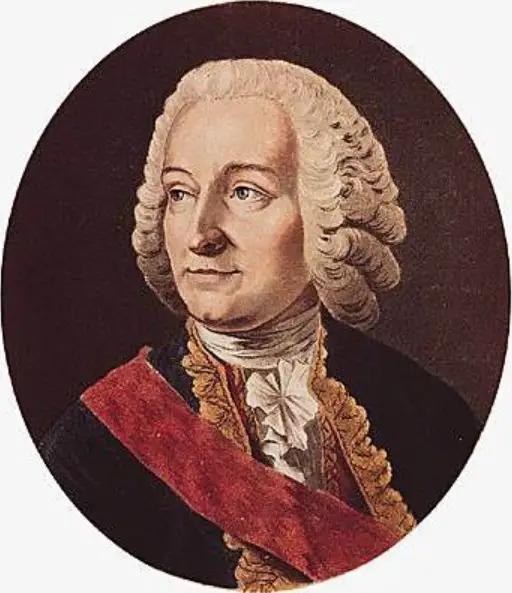
The main causes of conflict were as
- Impact of the war of succession in Austria,
- Unparallel commercial competition,
- Lack of French trade centres and sea-port in India,
- The desire of the establishment of political domination in India etc.
Anglo-French context continued from 1744 A.D. to 1763 A.D. In the First Anglo-French war (1744-1748 A.D.) French general Dupleix defeated the British troop.
By a peace treaty of ‘Aix-lus-sapple’ (1748), the conflict initially ended and the British got back Madras, which helped them to establish colonial rule in future India. The Second Anglo-French war (1749-1755 A.D.) was in favour of the British.
During the Third Anglo-French war (1756-1763) French general Count-de-Lally was defeated to British general Sir Eyre Coote in the battlefield of Wandiwash (1760). After that
- A peace treaty was concluded by which the French company lost their political domination except for trade and commerce in a limited area.
- On the other hand, the English company became more powerful.
- The English established monopoly colonial rule in India.
- The war of Carnatic made the fate of the colonial rule as well as the expansion of the British Empire in near future.
Failure of the French in the Anglo-French rivalry in India :
The conflict between the English and the French became inevitable when both the powers, the French and the English were predominant in India.
There were many reasons behind the failure of the French in the Anglo-French struggle for, rivalry in India.
- The main reason behind the failure of the French was an economic crisis. During the third Carnatic war, the British could meet their expenses from the wealth of Bengal. On the other hand, the French had to face a severe crisis due to a lack of mercantile prosperity.
- When Lully came to India the French could not receive more than Two thousand million Franks for warfare in India. It is known from the ‘Military Consultations of the East India company’ that Lully was late in occupying Trichinapally due to an economic crisis. He had to occupy the fort of Tanjore first for economic reasons.
- The British made their empire in India on the basis of strong naval power. The French lacked a strong naval force and was defeated by the British.
- The French soldiers had many defects in their characters. Lally was quite intelligent but very rude. On the other hand, British soldiers like Saunders, Eyre Coote, Ford, and Clive were much more efficient.
